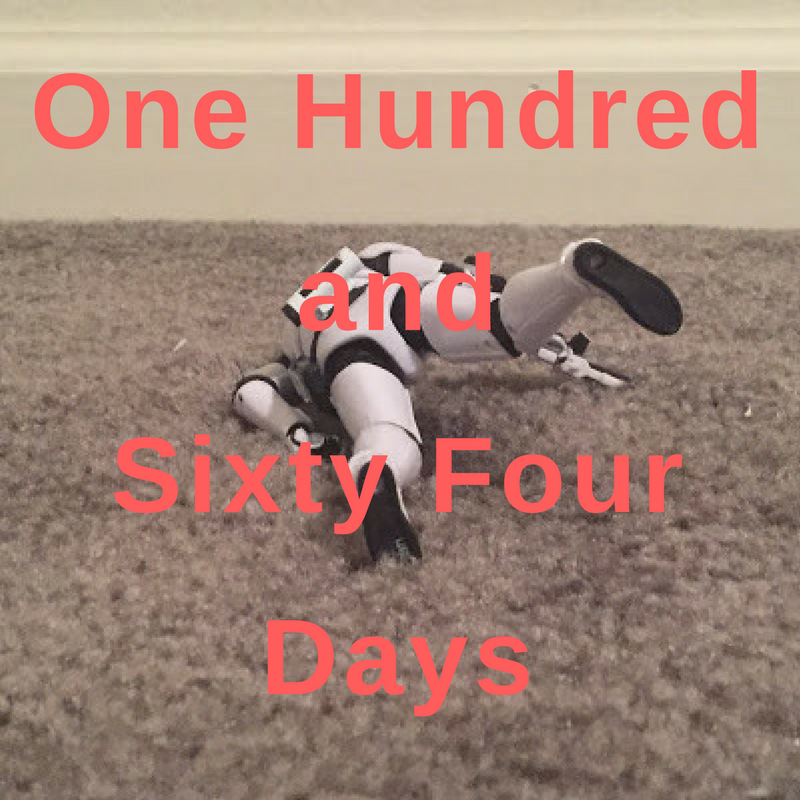
For anyone who wasn't reading comics at the time, it might be difficult to explain how big a deal the original Crisis on Infinite Earths actually was. The same features that made Crisis so successful and unique in 1985 have since been reiterated and plagiarized so many times that the impact of the original has probably suffered irrevocably as a result.
The first big crossover event - in the sense we use today, excluding earlier events such as the Avengers / Defenders war - was Marvel's Contest of Champions in 1982. That series was born out of the simplest thesis conceivable: make a series where all the heroes fight. A thin plot was concocted and series commenced: all the superheroes - and I mean all the superheroes, including a pile of new ones created specifically for the series - were teleported from Earth by supremely powerful entities with mysterious agendas to participate in a cosmic donnybrook. (In brief: the Grandmaster began a war with Death for the life of his fellow-elder the Collector, with the super heroes used as pawns). it lasted three issues, was entirely self-contained (the idea of a crossover "tie-in" was still a couple years in the future), and wasn't really very good by any stretch of the imagination.
Nevertheless, it was a rousing success. It was such a success that when Marvel decided to do it again a couple years later, they essentially recycled the same plot. Marvel Super Heroes Secret Wars - its complete full title - featured all the company's most popular heroes teleported millions of light years away from Earth by a supremely powerful entity with a mysterious agenda to participate in a cosmic donnybrook. (There were a few holdouts, for obvious reasons: the Silver Surfer and Doctor Strange were left out despite their prominence because their presences could have complicated the plot unnecessarily; and more "grounded" heroes such as Daredevil and Nick Fury were excluded as well because the exceedingly cosmic nature of the conflict would have left them with little to do.) Of course, just these brief encapsulations should be enough to give you a brief idea of how exactly these storylines began to run into trouble, even if you've never read them. The problem boils down to one of power inflation: in order to create sufficient in-story justification for uniting dozens of the company's most powerful and popular characters, a proportionately big enough menace has to be concocted. Contest of Champions featured nigh-omnipotent cosmic entities such as Death and the Elders of the Universe - big stakes, but not yet big enough. The two Secret Wars upped the ante by introducing an entirely new character - the Beyonder - whose power dwarfed every other previously seen cosmic entity, and whose very existence posed an existential threat not just to Earth but, um, everything.
I dearly love the two Secret Wars, but I would be hard pressed to call either of them "good" in any sense of the word.* They were, however, both fun, moreso than the era's critics are likely to recognize, and despite their wholly mercenary nature (designed to sell toys and crossover tie-ins, after all), they succeeded (or at least, the first series did) by providing the audience with exactly what they wanted: all the superheroes teamed-up between two covers fighting a single massive threat. That's the size of it, for better or for worse. Even if Secret Wars II soured the waters briefly, the era of the mega-crossover was here to stay, with Marvel subsequently producing Inferno, Acts of Vengeance, and ultimately the Infinity Gauntlet. I'll go on record as saying that the Infinity Gauntlet is Marvel's best overall crossover. Despite it's scope - the whole universe and every superhero in it - the crossover itself was limited only to those books immediately implicated. You can read the trade and, barring some missing prefatory material (Thanos Quest, a year and a half of Silver Surfer), still enjoy a legible, self-contained story that holds up pretty well two decades on.**
The power inflation of the two Secret Wars was still an issue, however. The series revolved around the villain Thanos having stolen the powers of God - not "a" god, the God - and systematically demolishing the universe. Therein lay the rub: as good a read as the Infinity Gauntlet was, it still suffered from the same power creep symptoms that had done in the Secret Wars. By concocting a villainous threat so all powerful that even the mightiest superhero was utterly impotent, the creators essentially sidelined the majority of those characters whose presence was the prime selling point. To his credit Starlin did the best that he could under the circumstances with this paradox: it was obvious from very early in the story that the major players were Adam Warlock, the Silver Surfer and Doctor Strange - with Dr. Doom, Thor and a few others in supporting positions - but he also made sure to keep tertiary characters such as Spider-Man, the Hulk and Wolverine relevant by emphasizing their unique perspectives. The Hulk and Wolverine, for instance, were both given the opportunity to react to Thanos' threat in a more characteristically ruthless fashion than the other heroes; Spider-Man got some face-time to angst about being so outclassed; Captain America rose to prominence by leading the assault team, etc. Starlin was very generous with his large cast, giving even folks like Cyclops and Cloak small moments in the context of a much, much larger story.
The later Infinity crossovers - the War and the Crusade - despite a few fun moments scattered throughout, were generally dismal affairs.*** They are only notable to contemporary readers for the fact that they are two of the best examples of the "get a bunch of superheroes to stand in the room and talk while waiting for a plot to arrive" school of crossover construction, i.e., great examples of what not to do if you ever find yourself tasked with writing a company-wide superhero event.
It took a long time for the crossover wars of the late 80s and early 90s to burn themselves out: by the time the industry collapsed in the later part of the 90s, excessive gimmick crossovers that had methodically burnt away reader goodwill were generally held to be a significant factor in the industry's painful decline. With a few exceptions, 90s crossovers were dire, desultory, confusing affairs which ranged from the absolutely nonsensical - Genesis and Onslaught - to the downright awful - Last Laugh, Maximum Security. (There were exceptions, such as the exemplary DC 1,000,000 and, to a much lesser degree, the well-remembered Age of Apocalypse, but on the whole, well-received crossovers only made the problem worse by inspiring half-a-dozen substandard sequels.****) By the time Marvel editorial changed hands in 2000, the consensus was that crossovers had run their course, and as a result the first few years of the last decade saw very few of them released. Marvel went five years - between 2000's Maximum Security and 2005's House of M - without producing a major line-wide crossover, and DC went three, between 2001's Our Worlds At War and 2004's Identity Crisis.*****
But every subsequent crossover can trace its lineage back to two series: the first Secret Wars and Crisis on Infinite Earths. Secret Wars was first out of the gate and perhaps served as some inspiration for Crisis' final shape, but that series was already well underway by the time the first issue of Marvel's maxi-series hit stands. Secret Wars, fun as it may have been, was really just another crossover: maybe one of the biggest that had been attempted up to that time, but not really designed for any kind of lasting significance. Crisis was different. It wasn't just a crossover. What strikes me the most about Crisis after all these years - especially as I've gotten older, hopefully wiser and far more cynical - is just how much work went into the damn thing. it was, at the risk of hyperbole, a very obvious labor of love on the part of everyone involved. It's hard not to respond to the clear enthusiasm that went into the creation of such a mad, convoluted and downright Proustian endeavor.
As dense and referential as Kingdom Come may have been (and it was pretty thick soup), Crisis is quite simply the densest superhero comic book ever made. Every single panel is the result of years of research on the part of the creative team - Marv Wolfman and George Perez - and that's no exaggeration. Crisis was initially announced in 1981 - four years before its eventual release. When Crisis finally saw print in the beginning of 1985, it was released alongside - and even considered at the time to be a sister series to - the first edition of the company's Who's Who series, a powers & stats guidebook conceived along similar, albeit far looser lines as Marvel's perennial Official Handbook. Wolfman was involved in much of the primary research and writing for that series, alongside Len Wein and Robert Greenberger. Essentially, the lead-up to Crisis required heavy research into every DC comic ever published, in addition to later additions such as Fawcett, Charlton and Quality, read either by Wolfman or his research assistant Peter Sanderson (who was actually, officially tasked with that thankless job). Crisis was envisioned as DC's 50th anniversary "party," and Wolfman intended, over the course of the very long series, to pay tribute to every chapter of DC's publishing history.****** This is what places Crisis head and shoulders above just about every other massive crossover ever published: it is, before anything else, an affectionate story conceived as a respectful tribute to the characters themselves. It had an actual reason to exist, besides selling lots of comics - but make no mistake, it did that, too.
* Secret Wars II gets a lot of crap but it's definitely much weirder than most people give it credit for, and it far more interesting than the first. In between all the superheroes, it's actually a bizarre Carlos Castaneda-ish exploration of expanding consciousness and evolving ethical awareness, in which Jim Shooter posits the Beyonder as a supremely naive Emile who travels the Marvel Universe in an attempt to comprehend sense-experience. It is that rare comic book crossover series that definitely benefits from a phenomenological interpretation.
** Jesus Christ I'm old - I bought the first issue of Infinity Gauntlet in a store that no longer exists whose name escapes me, in Incline Village, Nevada; the second in A-1 Comics in Charmichael - a store I haven't seen in over a decade; the third in Comix Experience in San Francisco; the fourth in World's Best Comics (also in Charmichael, and which I am very surprised to see is still actually in business because it was never that great a store despite all the money I spent there); the fifth off a 7-11 newsstand; and the sixth at Fantasy Books and Games in Santa Rosa, a store which also no longer exists. (Another branch of that chain apparently lingers in Livermore.) Man, all the comic book stores I used to love no longer exist - I knew 'em all up and down the length of California, Nevada and southern Oregon, and only a fraction of them remain.
*** If you really like the cosmic stuff (as I do), there's enough with folks like Thanos and Eternity scattered throughout both series to keep you entertained, but otherwise, as stories, they're both pretty thin gruel.
**** The best example of this effect is probably the aforementioned Age of Apocalypse. That event was so very well received that Marvel essentially retooled its entire publishing plan to capitalize on that perceived format. The subsequent un-success of similarly-formatted crossovers such as The Crossing, Over the Edge and Maximum Clonage, meant to unite their respective families of titles in similar fashion to how the AoA united the X-Men line, led to thousands of deaths. Similarly, DC's first major crossover after 1,000,000 was Day of Judgment, about which the less said is better.
***** You could make the argument that although Identity Crisis was a major event, it wasn't a crossover in the strictest sense because - as with the first Secret Wars - there were very few labeled tie-ins. However, it's important to remember that Identity Crisis was essentially the first shot off the bow for a very long mega-crossover sequence that built directly to the much larger Infinite Crisis, which in turn led indirectly to Final Crisis. Final Crisis doesn't quite "fit" with the previous sequence primarily because of the striking difference in tone between Morrison's story and the Geoff Johns-spearheaded Infinite Crisis sequence, but that slight disconnect will probably ensure that Final Crisis has a much longer shelf life than either Identity Crisis or Infinite Crisis, even despite the former's memorably sensationalistic (or, if you prefer, monstrously tacky) subject matter.
****** Sugar & Spike even manage a cameo. I won't tell you where if you don't remember the panel, but wow, when they said everybody they sure meant everybody.





No comments :
Post a Comment